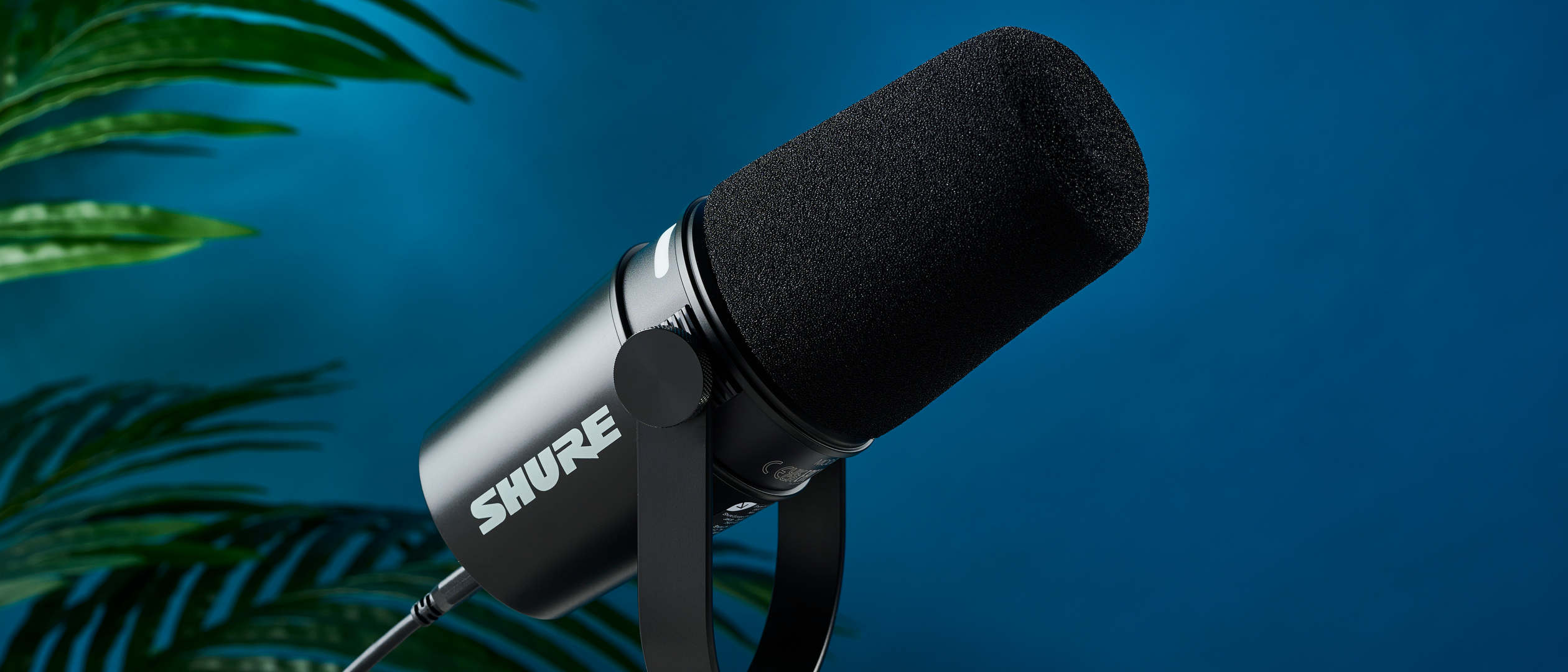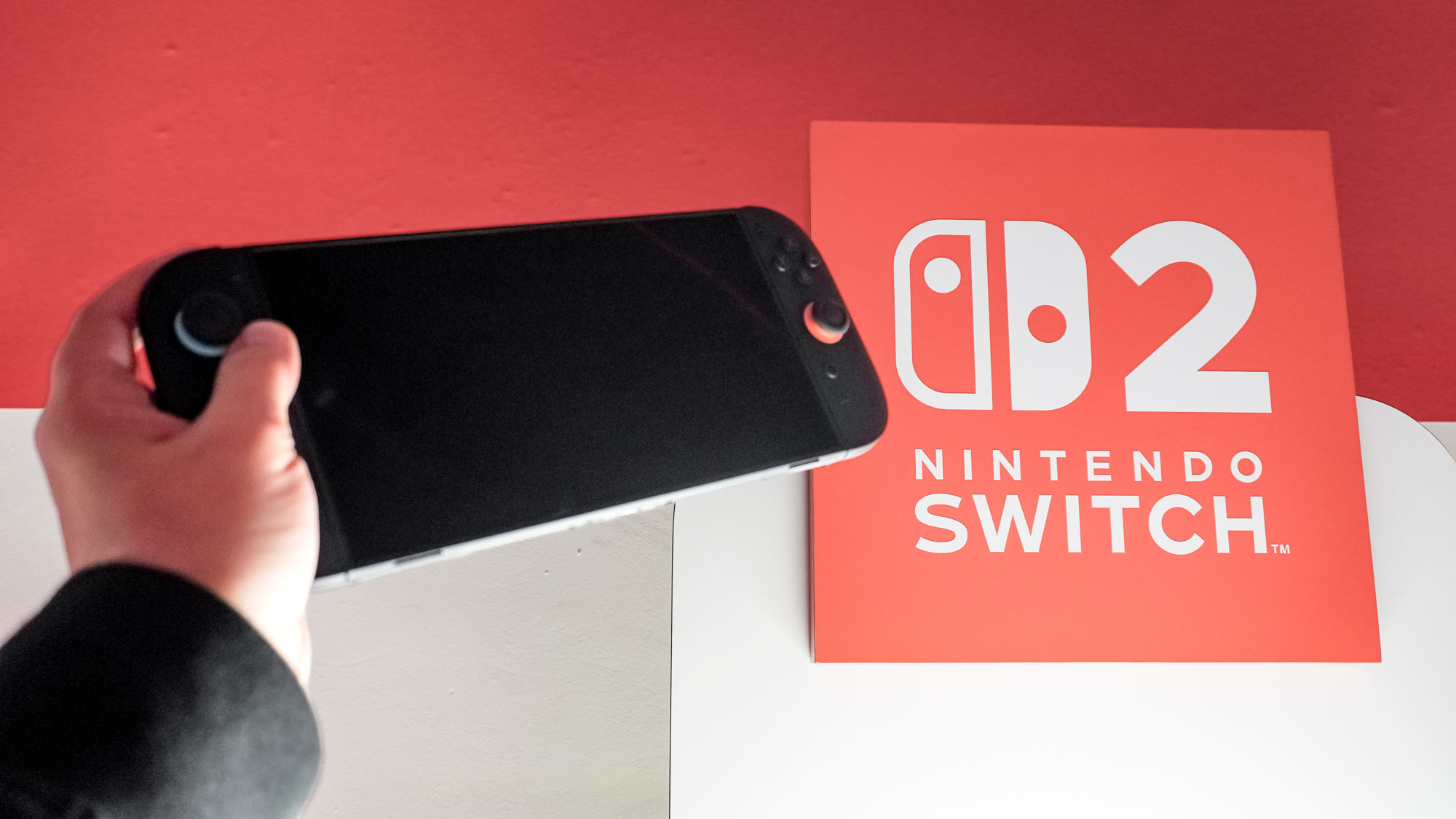Tom's Guide Verdict
Perfect for podcasters, streamers, and musicians, the MV7+ has a unidirectional polar pattern and a touchpad LED panel for muting and unmuting sound. This premium Shure mic is top-of-the-line and an impressive performer. But it might be too expensive in comparison to the competition.
Pros
- +
Touch LED panel
- +
USB-C and XLR connectors
- +
Real-time denoiser & digital popper stopper
- +
OBS software compatibility
- +
User-friendly
Cons
- -
Expensive versus other mics
- -
Boom arm sold separately
Why you can trust Tom's Guide
Designed for streamers, podcasters, and musicians, the Shure MV7+ mic is an adept, professional-quality microphone with an LED touch panel and voice isolation technology.
The MV7+ comes loaded with a digital popper stopper to preserve the warmth of your voice without hissing or plosive harshness. There’s also a virtual denoiser that minimizes ambient sounds, voice isolation technology, auto level mode, and a USB-C connector so you can plug it straight into your laptop — so it could be one of the best USB mics, too.
I hosted an online radio show and a podcast for three years, so I was excited to dust off my disc jockey skills and get stuck into the MV7+ to see if this is one of the best podcasting mics. Find out what I thought in my Shure MV7+ Podcast Mic review, and if it belongs on our list of the best microphones.
Shure MV7+ podcast mic review: Cheat sheet
- What is it? A high-spec unidirectional mic made for podcasters, streamers, and musicians
- What does it cost? $279 / £269
- What do we like? The LED touch panel, the clarity of sound, and the instant denoiser
- What don’t we like? At $279, it’s noticeably pricier than rivals
Shure MV7+ podcast mic review: Specs
| Price | $279/£269 |
| Connectivity | USB-C, XLR |
| Audio sensitivity | 40dB |
| Polar pattern | Unidirectional |
| Weight | 1.92 pounds |
| Dimensions | 15.9 x 7.8 x 7.7 inches |
| Colors | Black |
Shure MV7+ podcast mic review: Price & availability
The professional MV7+ comes with a professional price: It’s $279 at Amazon and Shure’s website, and unfortunately, doesn’t come with a boom arm or a desktop stand. The MV7+ with a desktop stand will cost you $299/£289 and the mic plus a boom arm is priced at $339/£349.
The MV7+ is priced similarly to the high-end Yeti Studio mic ($299) but pricier than our favorite overall mic, the Blue Yeti ($129) and our favorite USB mic, the Rode PodMic ($99).
Shure MV7+ podcast mic review: Design & controls
The MV7+ looks like your bog-standard mic, but with a bit of pizzazz. You can mute and unmute the mic using the color-changing touch LED panel, which can be customized to suit the lighting of your PC setup, or to differentiate between host and guest mics. I kept mine as the default green for the first part of testing, then settled on Shure’s “Fruity” preset.
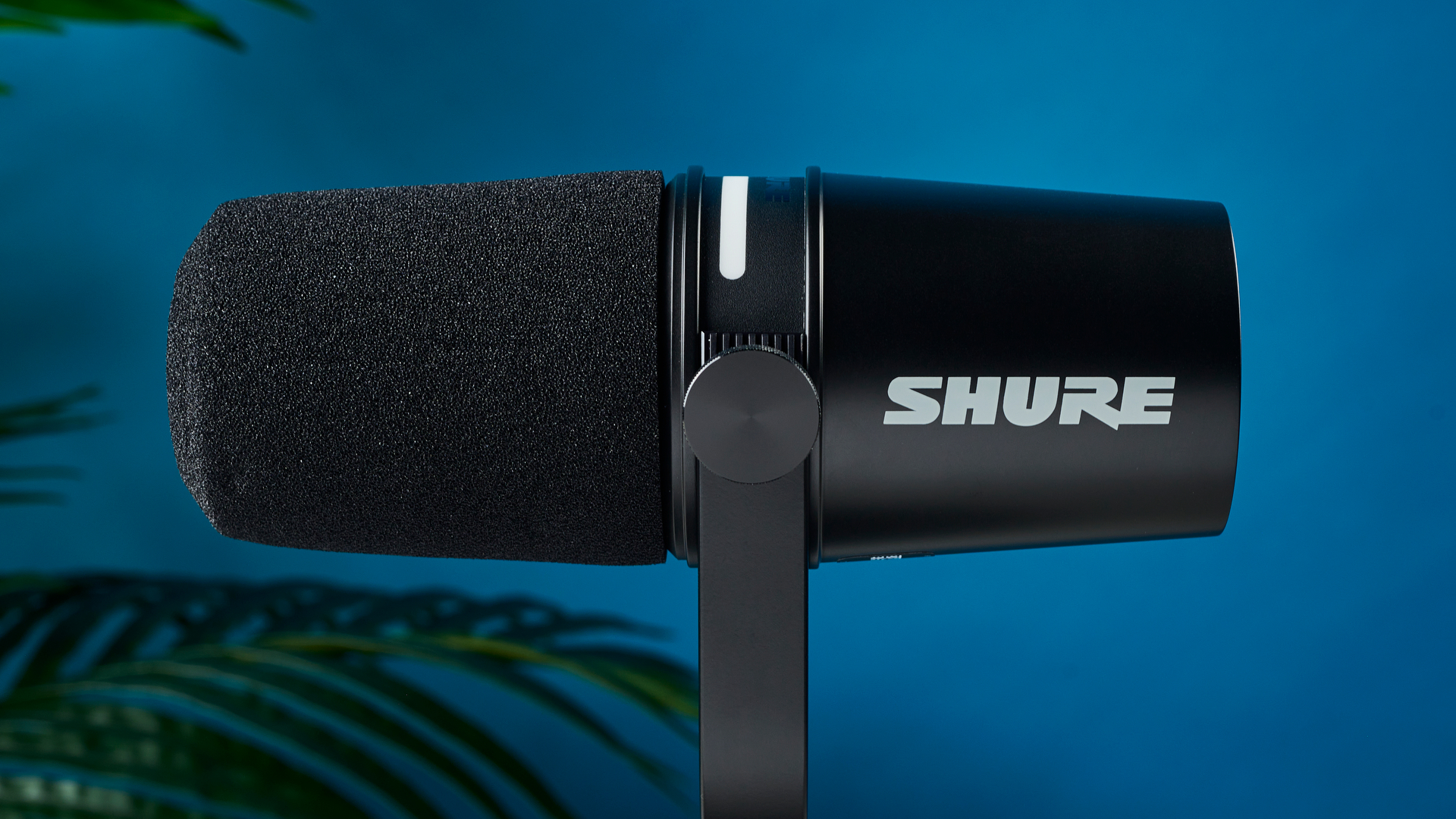
It’s not the only mic to have RGB LEDs — you’ll be able to find them on the HyperX QuadCast S ($159) and the Blue Yeti X ($169). But this is the only mic I’ve seen with a touchpad LED capable of checking gain, levels, and muting and unmuting the mic.
As it’s a plug-and-play mic, to set up the MV7+ you simply connect it to your laptop or recording device using the USB-C or XLR cable. If you have headphones with a 3.5mm jack, you can plug them directly into the mic to monitor your voice during recording or streaming. All of the customization controls are available via Shure’s Motiv app, which you’ll find out about later in this review.
Shure MV7+ podcast mic review: Features & connectivity
The MV7+ is perhaps the most straightforward mic I’ve ever used. As it’s a USB-C connection, you stick one end into the back of the mic, the other into your laptop, and you’re ready to go.
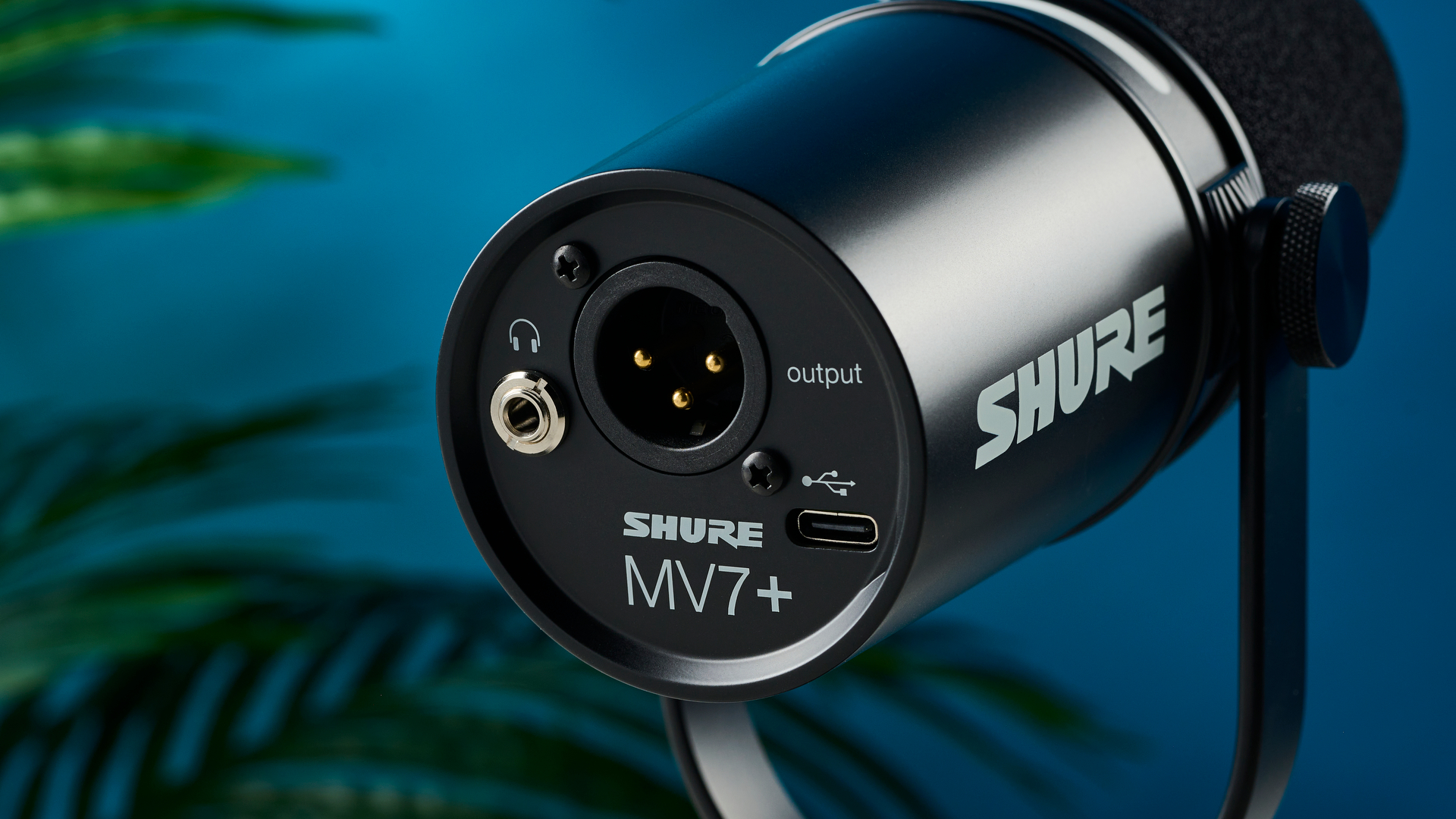
I opened Audacity — my favorite free audio production app — calibrated my input and output, and started recording. It’s practically foolproof.
The MV7+ can also connect via XLR, which provides higher fidelity than USB-C, but the difference shouldn’t be noticeable to most human ears. As I don’t have an XLR adaptor for my MacBook Air M2, I just tested the MV7+ using USB-C.
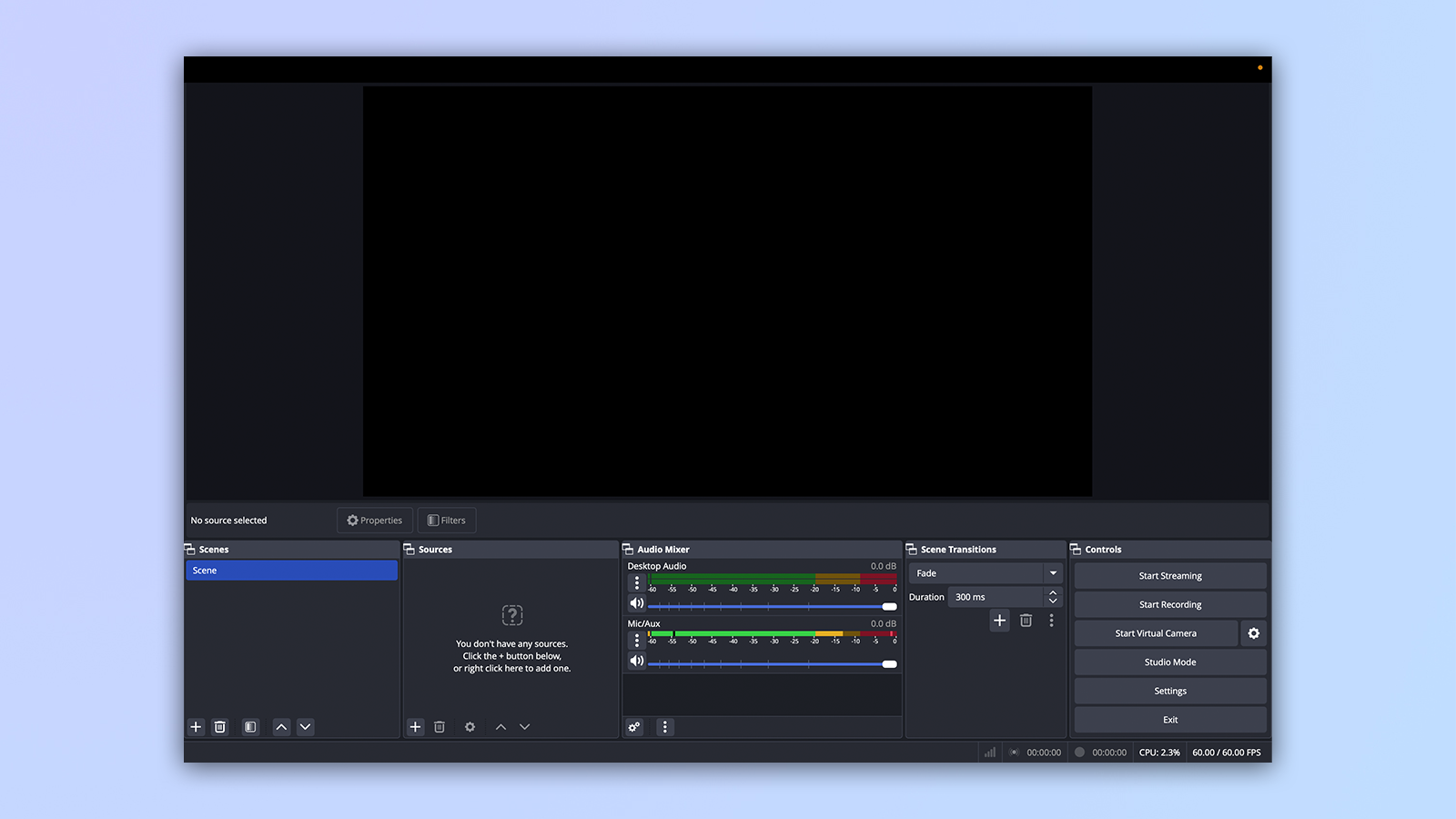
If you’re a streamer, MV7+ seamlessly integrates with Open Broadcaster Software. OBS automatically registered the MV7+ and, had I been recording or streaming, the connection would have been instant.
Shure MV7+ podcast mic review: Audio quality
In my radio past, I used the $399 Shure S7MB for three years, so I was curious to see if the MV7+ would be a cheaper rival.
The MV7+ mic’s unidirectional (cardioid) polar pattern means it’s better at ambient sound minimization than an omnidirectional mic. With the Blue Yeti, you can select polar patterns from cardioid, to omnidirectional, to bidirectional, to stereo depending on your immediate requirements. Unfortunately, the MV7+ is solely unidirectional.
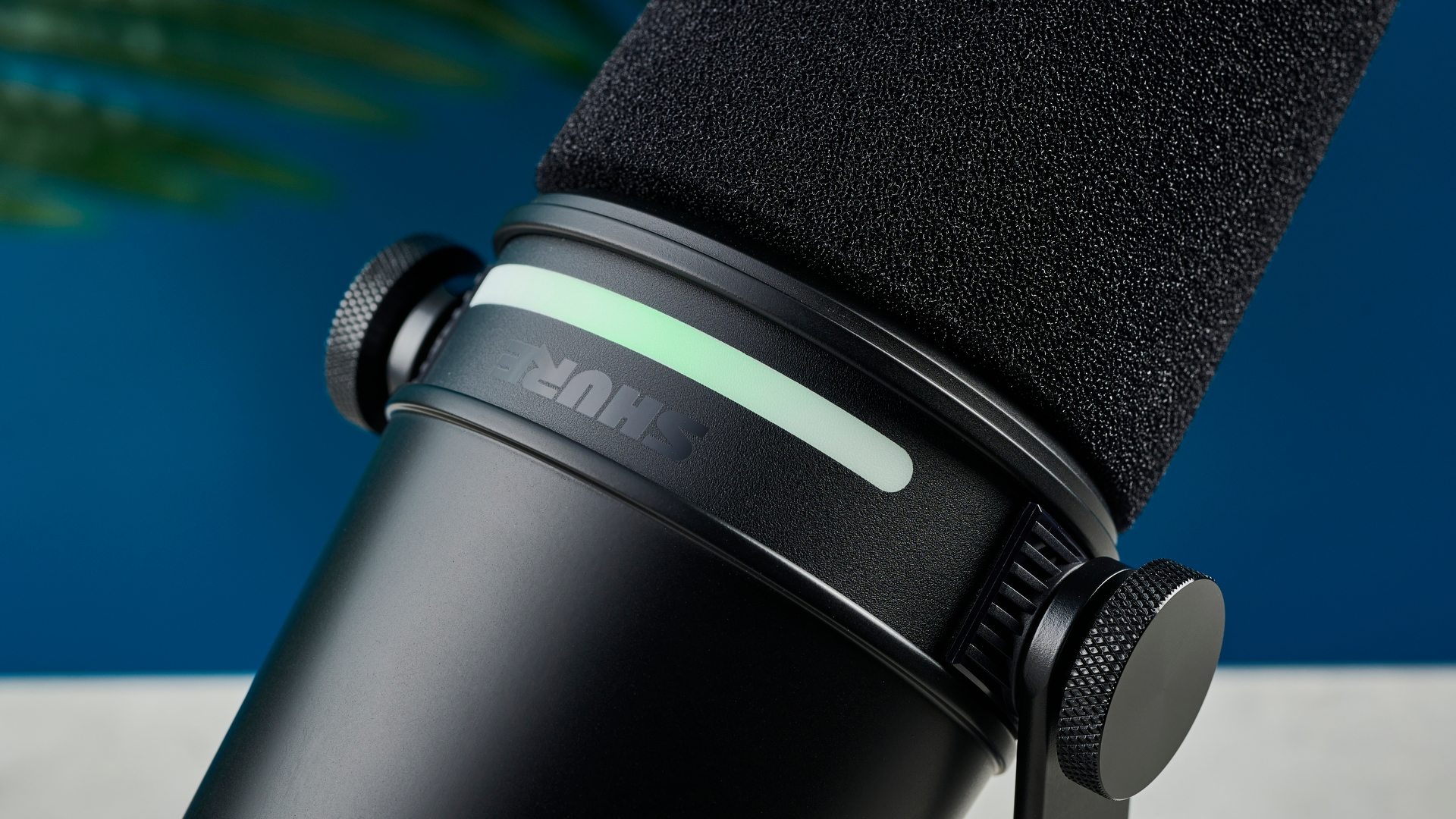
The unidirectional pattern, though, does mean the MV7+ is extremely good at picking up just your voice, perfect for podcasting, singing, or streaming.
To test out the microphone’s pop stopper, denoiser, and vocal tone settings, I read out some tongue twisters with different settings enabled. The mic has a deep, clear sound, and its unidirectional pattern made my voice the center of attention. The digital real-time denoiser technology meant the mic picked up less ambient sound than other mics, like the JLAB Talk ($99), which we found to pick up background noise, although it is almost $200 cheaper.
To test the denoiser, I played a “cafe conversation” white noise in the background of me reading out tongue twisters. My recording was clear and precise, but I could still hear a little background noise during my breaths or moments of silence. All in all, though, I was really impressed with the denoiser, especially as I recorded the same speech without the denoiser, and the cafe noise was much more apparent.
While the denoiser is great, I think the digital popper stopper isn’t as effective as it could be. When I said “Digital popper stopper” in the recording, you can hear the mic pop a little during the plosive sounds. You might want to get a physical pop filter if this is a major concern of yours.
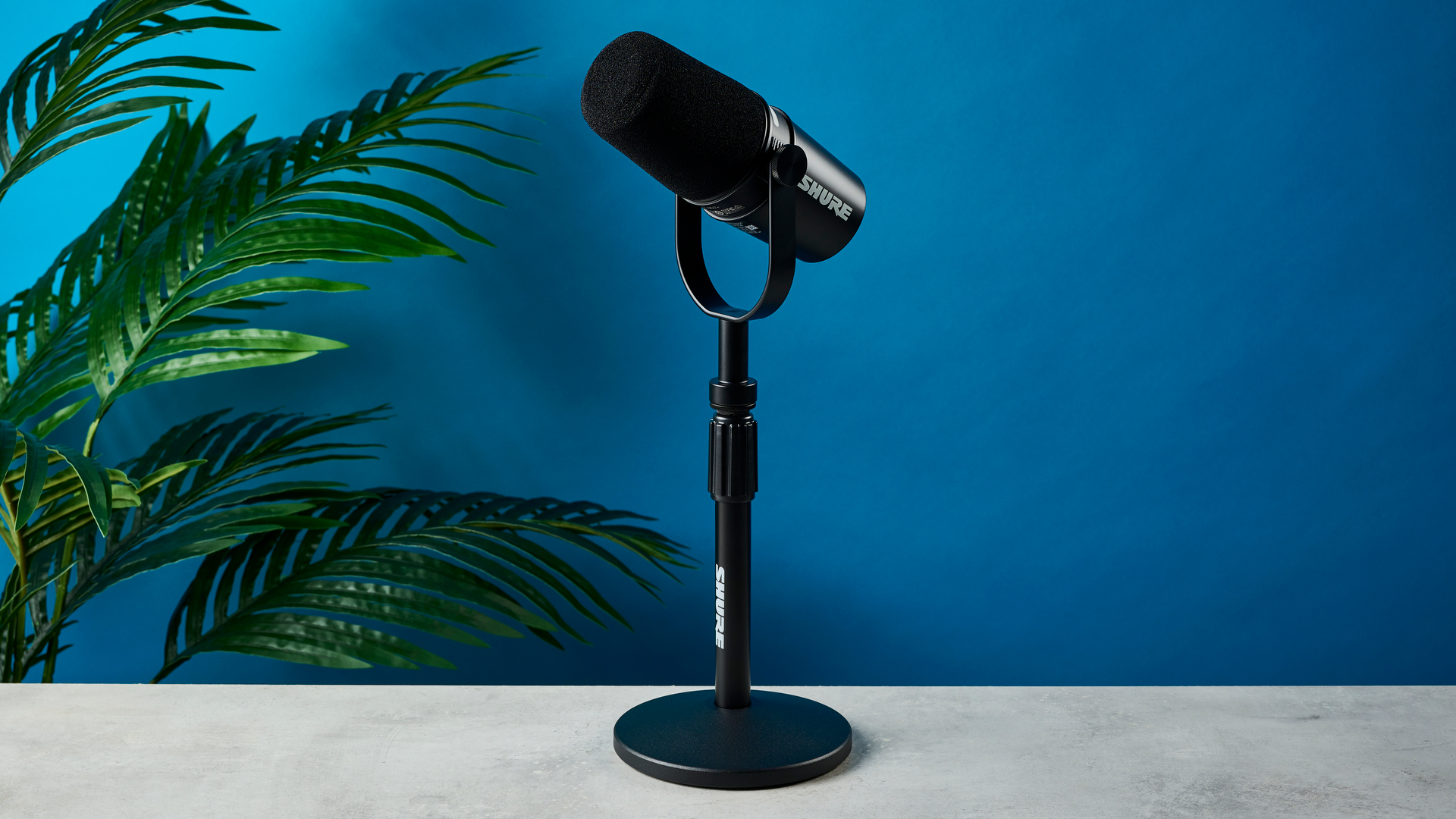
To test hissing “S” sounds, I enabled the denoiser and popper stopper settings and ensured my recording room was as silent as possible. I read the tongue twister "She sells sea shells on the seashore" to really put the MV7+ to the test.
I was really impressed with how “S” sounds came through the mic. There was minimal hissing, no pinching in my ears, and the words were clear and understandable.
As one would expect from a $279 microphone, the MV7+ is incredible at minimizing ambient sounds, plosive pops, and fricative hisses, while maintaining the natural cadence and depth of human voices. My voice sounded clear, rich, and my attempts at jokes were carried through the mic.
Shure MV7+ podcast mic review: App
The MV7+ is best when used alongside Shure’s new Motiv Mix app. This is a free app you can download from Shure’s website. The app has a basic UI and is easy to navigate, meaning even beginners will be able to use it. You can monitor the mic’s levels and gain, which should be set between -6 to -12dB for optimal sound.
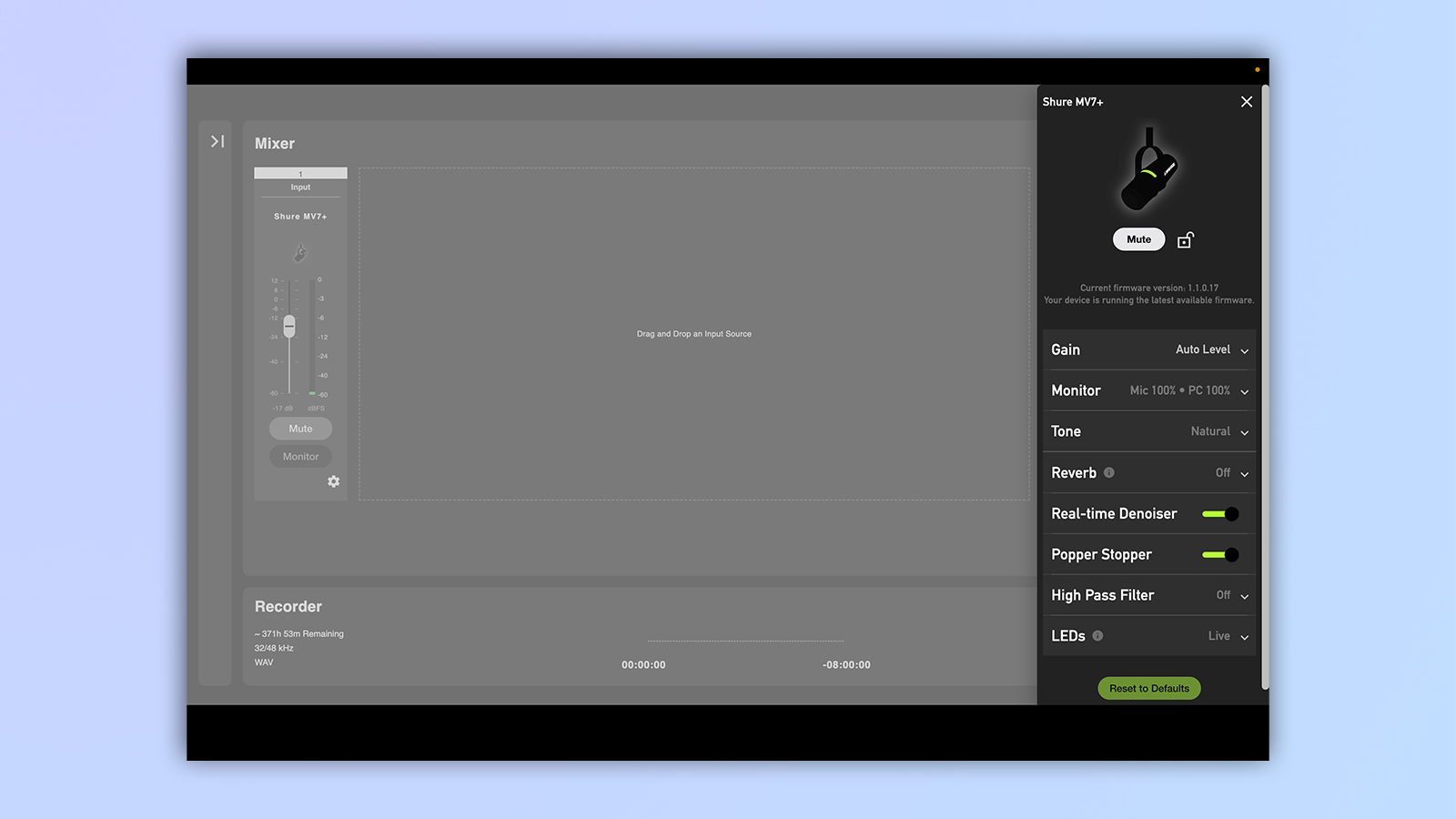
I played with my settings for a while on the Motiv Mix app, including reverb, vocal tone, denoiser and the high pass filter. I also customized the colors on the LED touch panel via the app. Shure says you can select from 16.8 million hues to completely customize the panel, but while you can select from an entire color wheel, the LED itself can only relay limited colors — various shades of green in the app, for example, will all look the same through the LED.
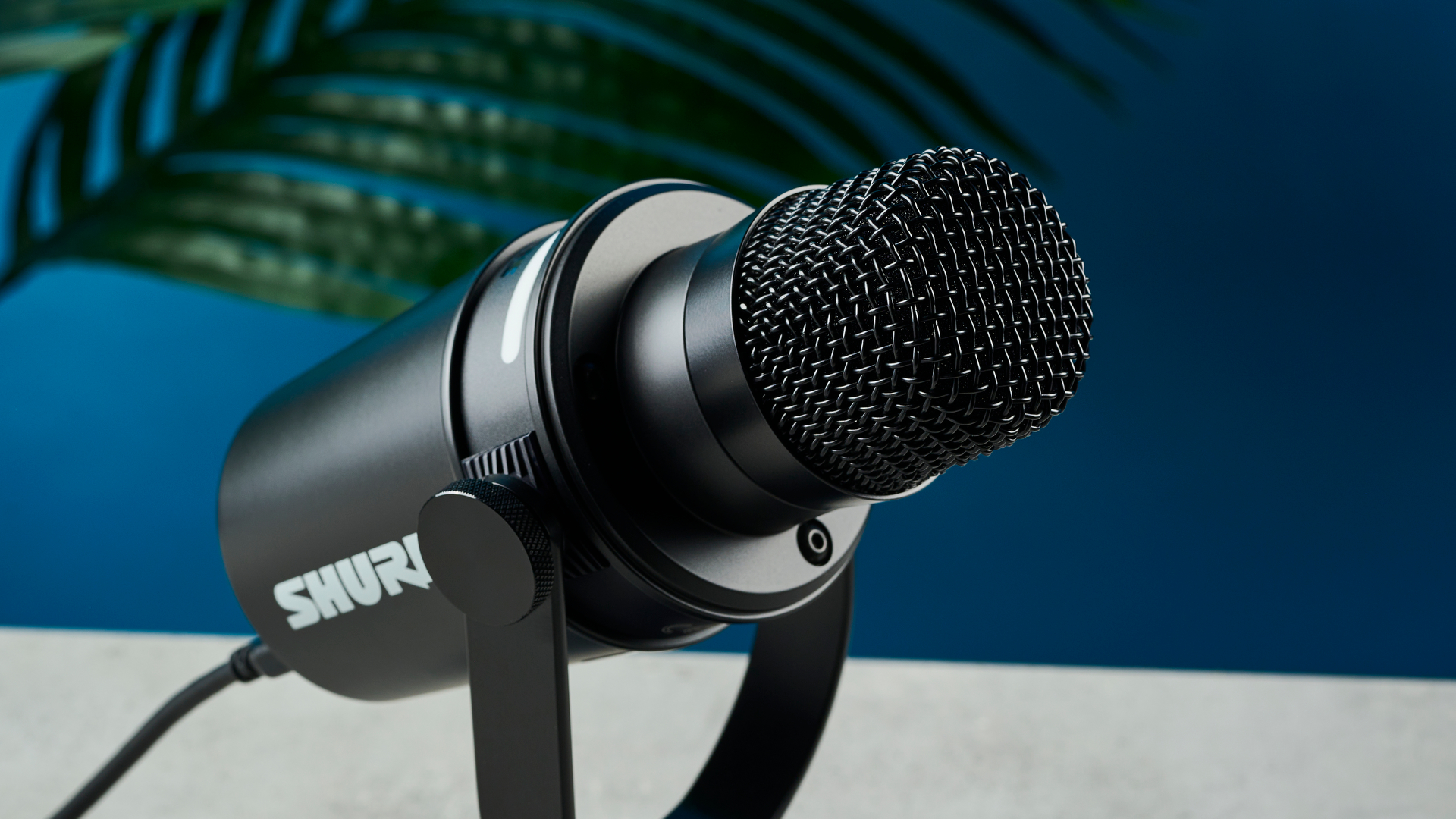
You can record directly into the Motiv Mix app, which is easy to do. The app lets you record up to 8 hours in high-fidelity 32-bit float 48 kHz. Rather annoyingly, it saves all your recordings into individual folders, so you have to manually open the folders and take out the one audio file in order to import them into your editing software in one go. You can’t edit in Motiv Mix, but I imported my .wav files easily into Audacity and produced them in there.
Shure MV7+ podcast mic review: Verdict
The MV7+ is a great choice for podcasters, streamers, content creators, and musicians alike. With its effective denoiser, digital pop stopper, and easy USB-C connection alone, this would already be a mic to beat. But pairing all that with an LED touch panel for instant muting and checking gain, makes this a fearsome microphone that will look great in any amateur, student, or professional setup.
However, at $279 ($339 with a boom arm, or $299 with a desktop stand), this isn’t a cheap mic, and our best overall mic, the Blue Yeti ($130), is much less expensive and just as easy to use. That LED touch panel is a nice feature, though, but you’ll have to decide if it’s worth the extra $150.

Erin Bashford is a staff writer at Tom’s Guide, covering reviews. She has a Masters in Broadcast and Digital Journalism from the University of East Anglia and 7 years of experience writing music, events, and food reviews. Now she’s turned her attention to tech for Tom’s Guide, reviewing everything from earbuds to garlic crushers. In her spare time you can find her reading, practising yoga, writing, or stressing over today’s NYT Games.
